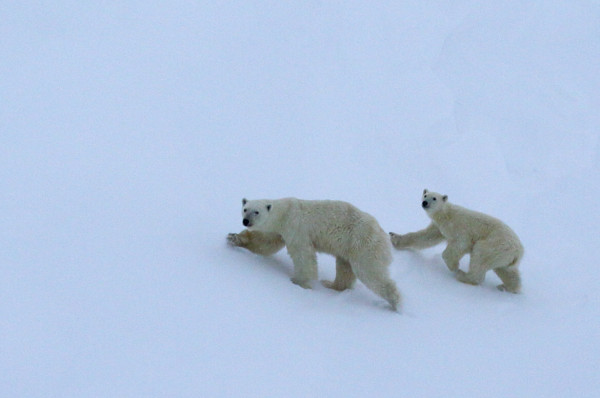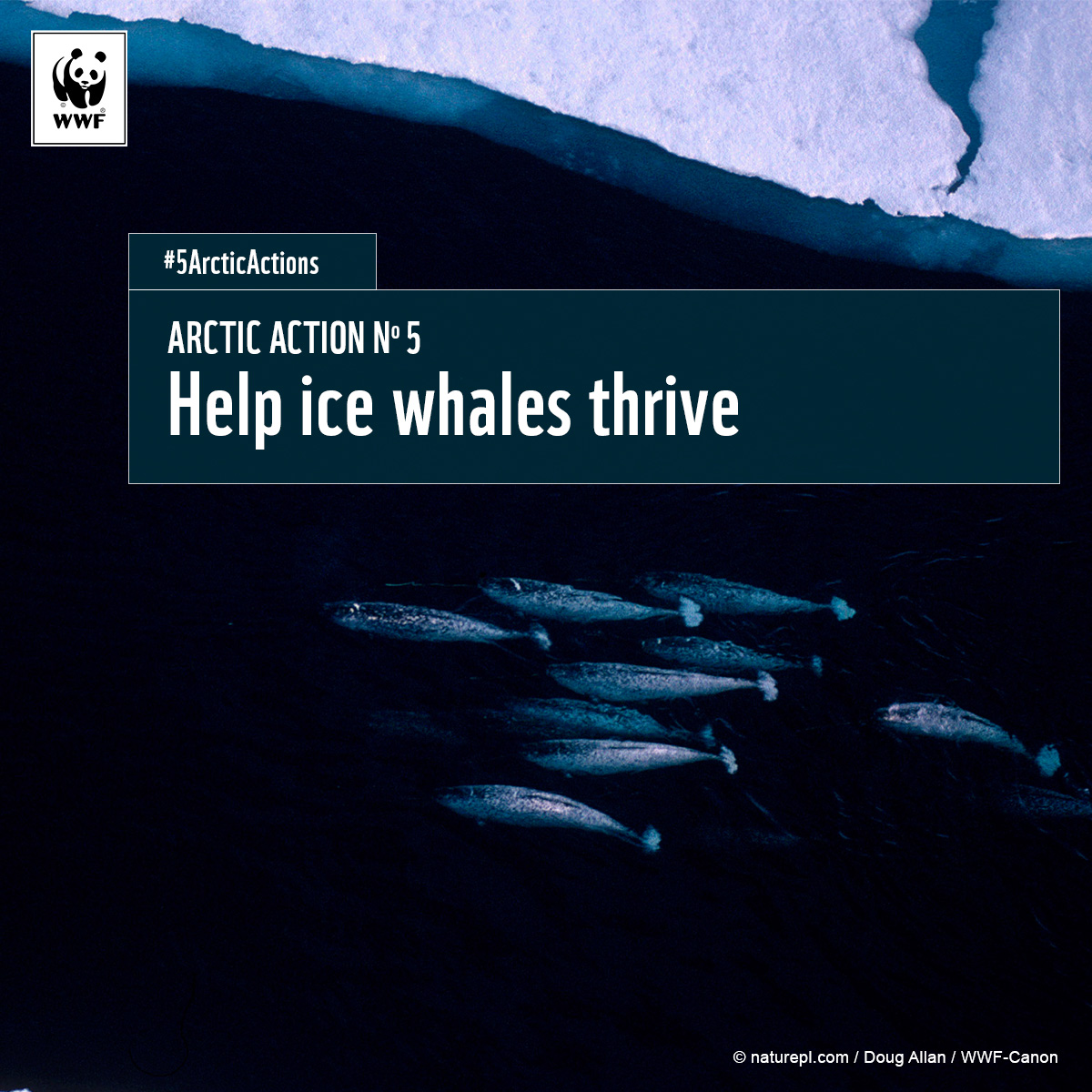Little is known about the polar bears, walrus and whales of Russia’s Kara Sea. This spring, WWF sponsored an expedition to this remote Arctic sea, for a preliminary survey (part 1, part 2). Dmitry Ryabov of WWF-Russia reports:
The area we surveyed is really hard to reach. The only way to get here, and to conduct a survey, is a helicopter. We flew mainly along the ice edge and near the coast, where we’d be most likely to encounter bears.
Immediately after take-off, the team was glued to the windows. Inside the helicopter, it’s too noisy to talk anyway.
Each time we spot something interesting, we note the details – weather conditions, ice conditions, speed and height of the helicopter. We also tried to take plenty of photos, though from a height of 100 meters with constant vibrations, it’s not easy. See the mysterious flash-like device on the camera? This gadget captures the latitude and longitude of each photo within a few metres.

Taking photos from the helicopter © Dmitry Ryabov / WWF-Russia
Now the fun part – this is a polar bear den. No one was home.

Polar bear den, Kara Sea. © Dmitry Ryabov / WWF-Russia
A walrus. One of only three we encountered.

Walrus, Kara Sea. © Alexandr Chichaev / WWF-Russia
Beluga whale. Our resident experts are divided: some consider it amazing to find belugas in the Kara Sea, others believe they’re not uncommon here.

Beluga in Kara Sea. © Alexandr Chichaev / WWF-Russia
And, finally, the Lords of the Arctic – polar bears.

Polar bear, Kara Sea © Alexandr Chichaev / WWF-Russia

Polar bear mother and cub, Kara Sea © Alexandr Chichaev / WWF-Russia
Over the next few months, the data we collected will be analyzed by staff from Russian Arctic National Park, WWF’s scientific partners for the expedition. The information we gathered is just the first step towards a complete picture of marine mammals in this region.
The results could help expand the system of protected areas around the Kara Sea. We hope to expand the survey in the future to surrounding areas, including the eastern coast of Taimyr and Novaya Zemlya.

